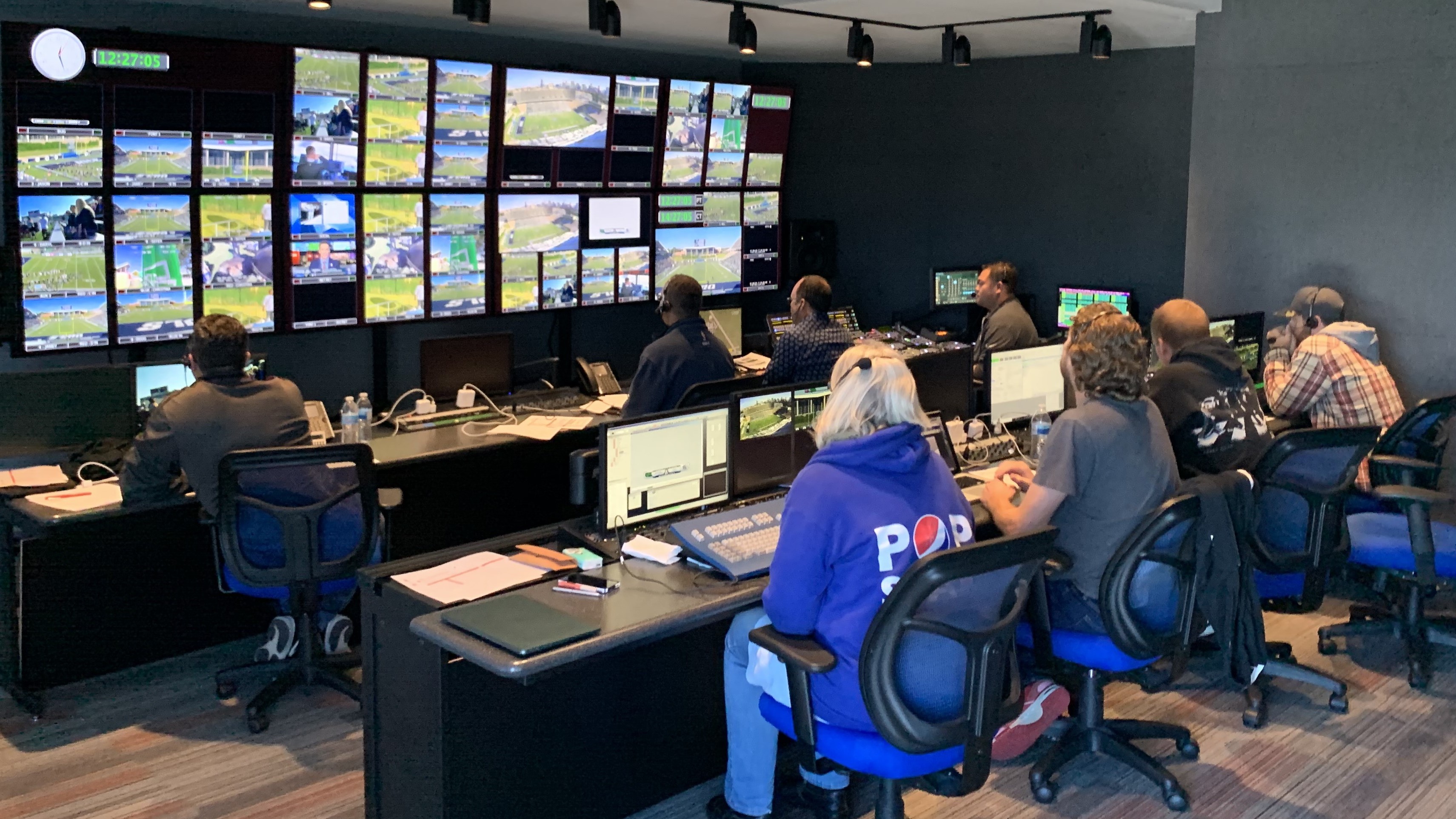How Remote Production Can Help Get Live Sports Back on the Air Amid COVID-19
A return to life as normal won’t happen soon

With lockdown measures easing in many places around the globe and a return to something resembling “life as normal” hopefully on the horizon, one thing in particular is on the minds of ardent sports fans: namely, getting live games back on their screens. Rebroadcasts of classic games and sports documentaries such as “The Last Dance,” the acclaimed Netflix and ESPN series, are feeding the appetite for all things sports while live events have been put on hold. A spike in esports on TV screens, such as the record breaking eNascar iRacing series, has also helped. Yet these options only go so far in satisfying sports fans’ hunger for genuine, live physical events.
As the world steadily comes to grips with the global pandemic, leagues and broadcasters are now keen to find the most straightforward ways to get live sporting events back on air as soon as they can. A return to life-as-normal is of course a shared goal for most industries, but what has become clear is that, even with an easing of restrictions and economies slowly opening up, the effects of COVID-19 will continue to reverberate in sports and other walks of life.
A world in which arenas are packed with fans, and international travel is once again the norm for teams and sporting personalities, will not return any time soon. Instead, sports leagues and rights owners must prioritize the welfare and well-being of staff, fans and players, likely leading to a “halfway house” scenario: games played behind-closed-doors with just key participants attending. As broadcasters and sports leagues around the world look at ways to begin bringing live sports back on air, one approach makes more sense than ever: remote production (REMI).
PLUS: Fox Sports, NASCAR Prep for Live Production
KICK-STARTING THE SPORTING CALENDAR
While the remote approach to live production has been leveraged for some larger events, it is still the exception rather than the rule for mainstream sports. However, as broadcasters, other rights holders and leagues make the gradual transition towards normality, finding new, safer ways to deliver the compelling live sports content that fans demand is imperative. Indeed, the time is right for remote production. It is a practical, deliverable and proven option for producing live events that lightens the load when it comes to travel, equipment and on-site staffing.
Remote production eliminates the need for large mobile units and crews at the event venue itself, creating a safer environment for production staff by ensuring that social distancing guidelines can easily be met. Employing remote capabilities means broadcasters and leagues can centralize production at their home studios or a dedicated third-party location—such as one of The Switch’s remote production facilities in Burbank or New York—with minimal crews onsite. This model involves broadcasters transmitting camera feeds, audio and equipment control over a private fiber network, at low latency, to the central facility. From here, operators can then remotely configure cameras and other equipment at the event site.
In short, as lockdown conditions ease, the REMI approach—pioneered over the past few years by The Switch and other live broadcast innovators—offers a faster and safer route for leagues, rights holders and fans to get what they want: live sports back on air.
The professional video industry's #1 source for news, trends and product and tech information. Sign up below.
As we steadily move into the post-COVID era, remote production of live sports events is coming into its own—especially where rights holders tap into the expertise of a partner that understands live sports and has deep experience in remote production. In fact, remote production has already been leveraged by major sports networks and rights owners, such as NFL Network, which leveraged The Switch’s REMI services to produce and deliver a 10-game Conference USA college football schedule in 2019.
PREPARING FOR THE ‘NEW NORMAL’ OF LIVE SPORTS
Post lockdown, the advantages of remote production go far beyond the ability to have smaller crews and less equipment on site. The more than 30% cost savings give broadcasters and other rights holders the scope to improve efficiency and even explore ways that they can deliver live content, from online streaming of shoulder programming through to social media integration.
Traditional linear TV has traditionally dominated live sports viewing, but it is far from the only game in town today. The live sports on-air vacuum is accelerating consumer take-up of streaming, with the new stay-at-home society accessing more streamed content than ever. Online streaming platforms have witnessed a 43% jump in viewership in the week starting March 29, according to analytics firm Stream Hatchet. Similarly, esports streaming service Twitch saw a 60% jump in viewership in March this year. When normal conditions resume, traditional sports broadcasters and leagues will need to meet this uptick in the demand for content across all platforms.
Aside from significant cost savings, remote production offers the potential for higher-quality production, with the ability to support more camera feeds and specialty equipment, such as SkyCam and RF cameras. Centralizing production also brings the advantage of greater flexibility, and the ability to cover multiple events in one day—and REMI’s reduced need for travel and shipping of equipment makes it more environmentally friendly.
What’s more, having a core group of experienced technicians covering a series of games for the same league is of huge value to broadcasters. An experienced crew knows what to expect, what to do and, critically, having worked together on a number of high-level broadcasts they will have established great communication, ensuring productions flow seamlessly and maintain the same look and feel across the season.
LIFE BEYOND LOCKDOWN
By enabling production crews to work in a home studio with reduced travel, remote production can also transform the impact on the work-life balance of staff, making careers more sustainable. This also means the pool of talent widens; skilled people who are normally unable or unwilling to constantly travel will now be drawn to working in the sector. These considerations will likely play an increasingly central role in the future evolution of live production.
Remote production offers a win-win for fans and rights holders, and it makes a compelling case for becoming the “new normal” for live sports. With rising costs and elevated consumer expectations already putting pressure on the live sports industry, remote production provides many of the answers that broadcasters and content producers seek. In addition to providing a means to get live sports back on air as soon as possible, this approach also provides the tools broadcasters need to take sports production to the next level.
Glenn Adamo is managing director of Production Services at The Switch.

